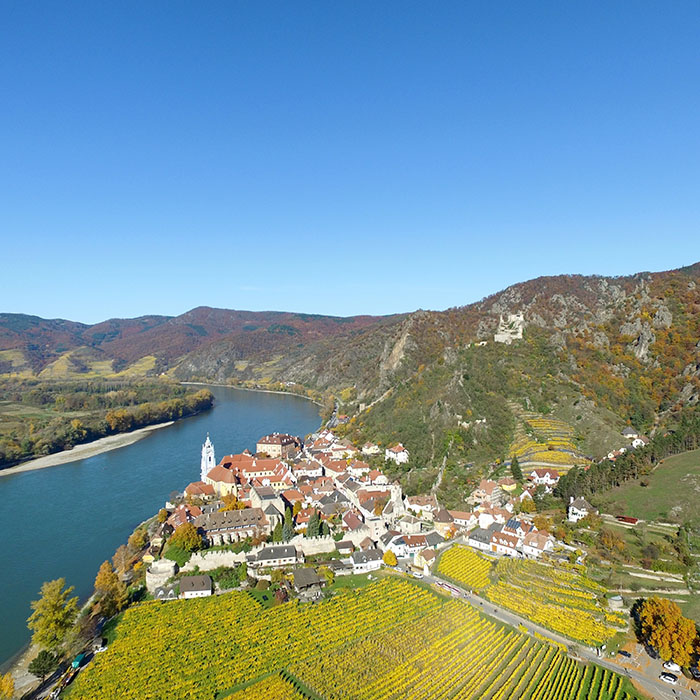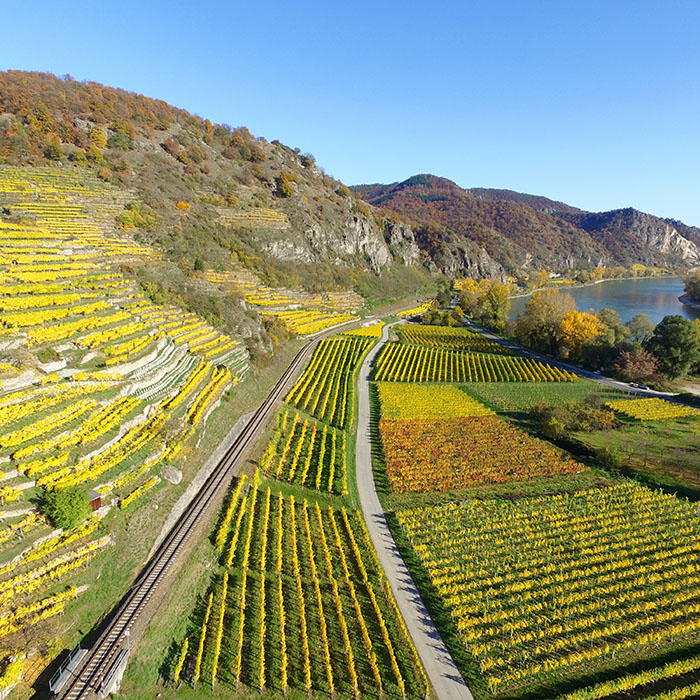Going Native: Grüner Veltliner
Author: Fiona Hayes

It might not be the easiest grape variety to pronounce or spell, and Grüner Veltliner, or “Grüner” to those in the know, can often be overshadowed by other more widely planted varieties both in native Austria (enter, Riesling) or elsewhere. It may come as a surprise, then, to learn that this humble grape variety accounts for over a third of the country’s vineyard plantings – over 14,000 hectares. The reason for this is its innate quality. The wines display grapefruit and stone fruit characters with a rocket salad spice, as well as having refreshing acidity that enables the wines to age beautifully. In fact, although many Grüners are meant to be enjoyed in their youth, some benefit considerably and come into their own after a few years’ bottle age. It is these expressions, those that have a purity and finesse but with a full-bodied backbone, that can easily compete with white Burgundies and aged German Rieslings that you may typically look to when seeking out wines to lay down, or when drinking wines that display tertiary (those aromas developed through ageing) notes.
Most Grüner in Austria is planted to the north or north west of Vienna, with the Wachau, Kamptal & Kremstal regions a particular area of focus. The Wachau follows the Danube River and is characterised by steep terraces with complex, rocky soil structures that this post simply hasn’t the space to touch on. This unique site gives Grüners a steely, racy and tight-knit character, shining with energy and soul. Look to estates such as Weingut Prager and Biodynamic estate Nikolaihof (who grow and produce the Berry Bros. & Rudd Own Selection Grüner) for world class examples, as well as neighbouring estate Weingut Knoll with their eye catching baroque style label – so ‘old school’ it remains every inch of cool. As you move a little further north you’ll find vineyards of the Kremstal and Kamptal where famous vineyards such as Heiligenstein and Gaisberg are located and where rolling hills are more typical. Here at Berry Bros. & Rudd, we are fortunate to work with Willi Bründlmayer in the Langelois, who is regarded as one of Austria’s greatest winemakers and influencers. Due to the Loess rich soils, and being slightly warmer than the Wachau, his Grüners are juicier in style. Not to be overlooked are the Grüners produced in Wagram, south of the River Danube and just West of Vienna. When you find a good producer and vineyard site, these wines can demonstrate great finesse, such as the wines from family run Weingut Ehmoser, based in Tiefenthal. For me, what really makes a Grüner Veltliner stand out as a star variety is its versatility and suitability for pairing with different dishes. The refreshing acidity and spicy notes make it a perfect accompaniment to Asian cuisine such as various curries and dim sum, but it is equally at home on a Friday night with fish and chips, or with classic Austrian asparagus and schnitzel. In fact, gastronomy is such an intrinsic part of the region that both Brundlmayer and Nikolaihof have their own restaurants, so if you are ever in the area, I thoroughly recommend a visit.

To the converted, I will be preaching unnecessarily, but for those who still need a little persuasion to explore the delights of this most versatile of grapes, two of our growers will be showcasing their Grüner Veltliners and other wines in our Pall Mall shop this week. Drop in on Saturday 3rd February from 2-4pm to meet Weingut Prager, and on Tuesday 6th February from 12noon to 2pm to meet Weingut Willi Bründlmayer. There’ll also be a selection of our other Austrian highlights on taste in our Enomatic machines.
Wine Buyer Fiona Hayes reccommends:
2016 Grüner Veltliner, Von den Terrassen, Josef Ehmoser, Wagram
2016 Grüner Veltliner, Kamptaler Terrassen, W. Bründlmayer, Kamptal
2015 Grüner Veltliner, Ried Loibenberg Smaragd, Emmerich Knoll, Wachau
2015 Berry Bros. & Rudd Own Selection Grüner Veltliner, Nikolaihof (available in store)



Just back from a holiday in Weidach at a hotel owned by the wine producing Pfeffer family. They served a Roter Veltliner, new to me, confusingly a white wine but heftier than GV. We also enjoyed a half bottle of Beerenauslese (€38, but it lasted us two days).